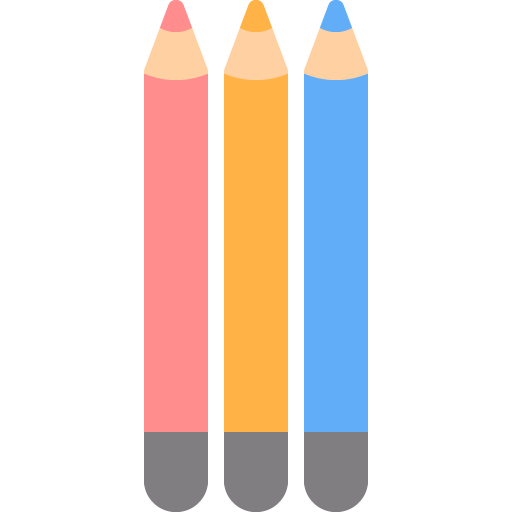Starting to learn drawing is an exciting journey, but it can also be frustrating at times. Many beginners struggle with similar challenges that slow down their progress or cause them to lose confidence. The good news is that most of these obstacles are completely normal and can be overcome with the right approach. Understanding the most common mistakes new artists make—and how to fix them—can help you develop better habits, improve faster, and enjoy drawing more.
Mistake 1: Drawing What You Think You See Instead of What You Actually See
One of the biggest barriers for beginners is relying on their memory or assumptions about an object rather than careful observation. For example, you might think a circle looks perfectly round in your mind, but when you look at a real apple, the shape is slightly irregular. Drawing what you think rather than what you observe leads to drawings that look off or unrealistic.
How to Fix It: Practice observational drawing. Spend time really looking at your subject before you start drawing. Break down complex objects into simple shapes and measure proportions carefully. Use techniques like sighting (holding your pencil out at arm’s length to compare sizes and angles) to train your eye. Slow down and resist the urge to guess.
Mistake 2: Ignoring Proportions and Perspective
Many beginners overlook the importance of proportion and perspective, which can result in distorted or flat drawings. For example, a face with eyes too far apart or a building with skewed angles can feel unnatural or awkward.
How to Fix It: Learn the basics of proportion and perspective early on. Use guidelines, grids, or horizon lines to structure your drawing. Study one-point, two-point, and three-point perspective and apply them to your sketches. Practice drawing from real life to understand spatial relationships.
Mistake 3: Over-Erasing or Erasing Too Much
Erasing is a natural part of the learning process, but some beginners erase constantly or rub out entire sections too quickly. This can damage the paper, waste time, and hinder your ability to learn from mistakes.
How to Fix It: Use a light hand when sketching so you don’t need to erase heavily. Instead of erasing completely, try adjusting or incorporating “mistakes” into your drawing. Remember, each mark teaches you something. Use erasers sparingly and choose kneaded erasers that lift graphite gently.
Mistake 4: Focusing Only on Outlines
Beginners often rely too much on outlines, drawing hard lines around objects without considering light, shadow, or form. This can make drawings appear flat and cartoon-like.
How to Fix It: Study values and shading techniques. Practice drawing with a range of tones from light to dark to create depth. Learn how light affects the shape and texture of objects. Use blending, cross-hatching, and layering to add volume. Try to “draw what you see” in terms of light and shadow, not just edges.
Mistake 5: Rushing Through the Process
Impatience is common among beginners eager to see finished results. Rushing leads to sloppy sketches, missed details, and less learning.
How to Fix It: Slow down and focus on quality over quantity. Set aside dedicated practice time and break your drawing into stages—planning, sketching, refining, shading. Use each session to work on specific skills rather than finishing a drawing too quickly. Patience leads to better work and a stronger foundation.
Mistake 6: Avoiding Difficult Subjects
It’s tempting to draw only what feels easy or enjoyable, but avoiding challenging subjects limits growth. For example, many beginners shy away from drawing hands, faces, or complex perspectives.
How to Fix It: Embrace challenges as opportunities to improve. Break difficult subjects into manageable parts. Use reference photos, tutorials, or step-by-step guides. Practice these areas regularly, even if it feels frustrating at first. Over time, your skills will catch up.
Mistake 7: Not Practicing Regularly
Inconsistent practice slows progress and makes it harder to build muscle memory and observation skills.
How to Fix It: Create a regular drawing routine. Even 10 to 15 minutes a day can make a big difference. Keep a sketchbook to track your progress and stay motivated. Mix up your practice with exercises like quick sketches, studies, and creative doodles.
Mistake 8: Comparing Yourself to Others
It’s easy to get discouraged when comparing your early work to the polished drawings of experienced artists, especially on social media.
How to Fix It: Remember that everyone starts somewhere, and every artist’s journey is unique. Focus on your own growth and celebrate small improvements. Use others’ work as inspiration, not as a measure of your worth.
Mistake 9: Using the Wrong Tools or Materials
Beginners sometimes believe they need expensive supplies to create good art, which can lead to frustration or wasted money.
How to Fix It: Start with basic materials like a sketchbook, a few pencils of different hardness, and a good eraser. Learn fundamental skills before investing in specialized tools. Good drawing skills translate across materials.
Mistake 10: Neglecting the Fundamentals
Jumping straight into complex compositions or advanced techniques without mastering basics like shapes, line quality, and anatomy can hinder improvement.
How to Fix It: Spend time on fundamentals regularly. Practice drawing simple shapes, study anatomy basics, and work on line control exercises. Strong fundamentals make advanced drawing easier and more rewarding.
